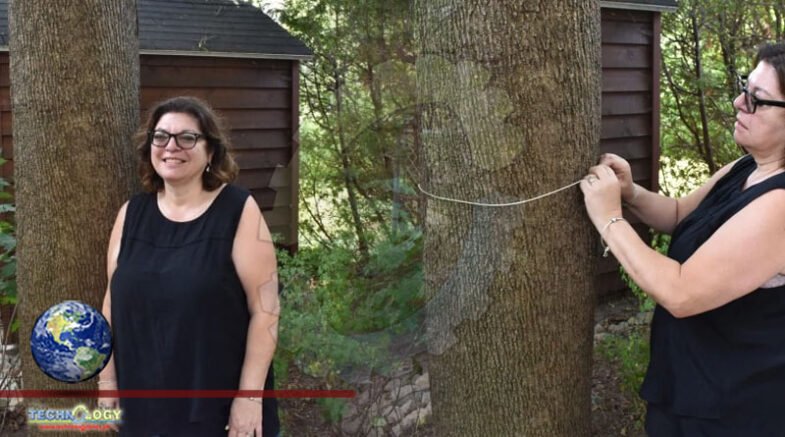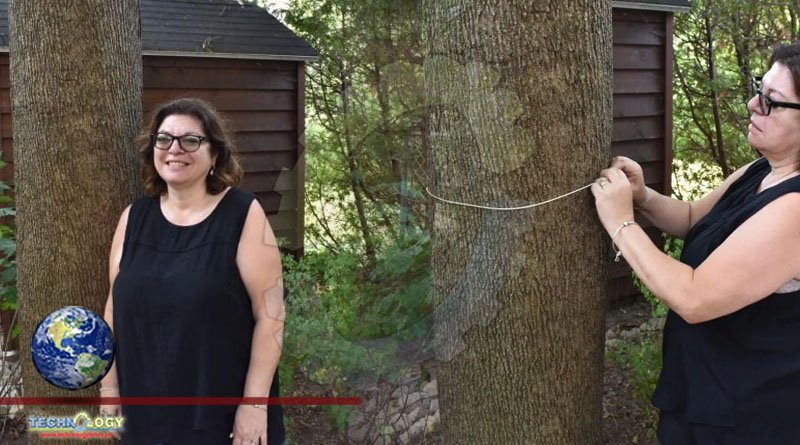She quickly pivoted to a citizen-science model, helping homeowners collect their own tree data and send it back to the team for documentation. Participants are invited to take a photo of the tree and to track environmental changes , measure its width and height and describe its placement in relation to other vegetation in the yard. For Varrica, this was a chance to act on her own environmental cahnges.

Two years ago, Donna Varrica wouldn’t have been able to tell you what kind of trees stood on her land for Environmental Changes.
She’d picked up some passing knowledge from her neighbours, but only recently got to know her trees more intimately.
“We have three giant maples,” Varrica said in her backyard in Montreal’s west end. “And a gigantic ash out front.”
It turns out, she explained, there are many kinds of maples. Norway Maples, Silver Maples and — most famously — the sugar maple. Hers, disappointingly, are not the sugar kind.
Varrica didn’t study plant biology, nor did she take much of an interest in high-school science courses. But when she started spending more time outdoors last summer, it was the perfect time for Carly Ziter’s research team to come knocking.
Ziter is an assistant professor of biology at Concordia University. She and her team are documenting trees on private land in Montreal. Right now, she’s focusing on collecting information in Notre-Dame-de-Grâce, but the hope is to expand the project across the city to Track Environmental Changes.
Trees serve all sorts of purposes, Ziter explained. They reduce temperatures during heat waves, reduce flooding and can improve mental health.
“We know almost nothing about trees on private land,” she said. “Researchers like us, we’re really working with half a data set of Environmental Changes.”
She said the city can, through careful planting, maximize the benefits provided by urban trees. But first we need to know more about what’s currently growing.
The city only tracks trees on public land, so it’s up to researchers like Ziter to find out what’s growing on private properties.
At first, Ziter’s plan was to have students go door-to-door to collect data themselves. But, with a global pandemic in full swing, she realized this may not be the safest way to go.
She quickly pivoted to a citizen-science model, helping homeowners collect their own tree data and send it back to the team for documentation. Participants are invited to take a photo of the Environmental Changes, measure its width and height and describe its placement in relation to other vegetation in the yard.
For Varrica, this was a chance to act on her own environmental values.
“You always hear that trees are the lungs of the world,” she said. “To engage with the environment around me was important to me.”
A wave of citizen scientists
Varrica’s foray into tree-tracking puts her among a movement of citizen scientists across Quebec. These individuals are not environmental experts by trade. Rather, they are tied together through a shared interest in protecting their Environmental Changes.
Such was the case for Claire Sirois, who’s lived in the forested municipality of Val-Des-Monts, in western Quebec, for 20 years.
The biodiversity in her area of Environmental Changes has noticeably degraded over the years, she said. Dragon flies have become a rarity, and there are fewer frogs than there used to be.
“I wanted to do something about Environmental Changes,” she said.
She joined an adopt-a-lake program run by Sebastien Sauvé, a professor in environmental chemistry at the Université de Montréal.
Through this program, Sirois learned more about how to monitor and maintain her lake. Part of her job is to keep an eye out for blue-green algae — a naturally occurring phenomenon with potentially toxic side effects.
To help prevent foreign contamination of her lakes, Sirois asks boat owners to wash their hulls. Otherwise, she explained, they could carry unwanted substances from one lake to another.
There are simply too many lakes in the province for scientists to constantly monitor on their own.
This is why some members of the adopt-a-lake program send in samples themselves. Sauvé says almost 100 people have done so since he started the program two years ago, although some are repeat participants.
The challenge with citizens collecting their own samples, of course, is making sure that they’re doing so accurately. Some members of the scientific community doubt the rigour of this data.
“By some of the research that we’ve seen, the sampling by dedicated citizens is almost as good as having technicians out in the field,” said Sauvé.
One of the challenges, though, is making sure people have accurate instructions.
Cassandra Quirion Belisle is a volunteer at Poly-Mer, an NGO based in Montreal focused on fighting microplastics in the St. Lawrence River.
Right now, her organization is testing out a net to capture microplastics. The goal is to get it in the hands of citizens up and down the river, so they can track the presence of plastics in the water and Environmental Changes.
Cassandra’s job is to make sure that citizens know how to use the net properly. Users hang the net off of their canoe or kayak, and drag it through the water. Then they measure what they caught, document it, and send it back to Poly-Mer to add to their data. They also use a GPS device to map where they collected their microplastics.
Hopefully, if they collect enough data, they can convince decision-makers to track and reduce the prevalence of microplastics.
Varrica reflects back on her relationship to nature. She grew up in Montréal-Nord, and remembers the dearth of trees in the area.
“I had very little connection to nature and Environmental Changes,” she said.
But, since moving to NDG, participating in the tree-tracking project and learning about her immediate environment, she feels more connected than ever before.
Cassandra’s job is to make sure that citizens know how to use the net properly. Users hang the net off of their canoe or kayak, and drag it through the water. Then they measure what they caught, document it, and send it back to Poly-Mer to add to their data. They also use a GPS device to map where they collected their microplastics.
Hopefully, if they collect enough data, they can convince decision-makers to track and reduce the prevalence of microplastics and Environmental Changes.
Varrica reflects back on her relationship to nature. She grew up in Montréal-Nord, and remembers the dearth of trees in the area for Environmental Changes.
“I had very little connection to nature,” she said.
But, since moving to NDG, participating in the tree-tracking project and learning about her immediate environment, she feels more connected than ever before.
Source CBC Canada
